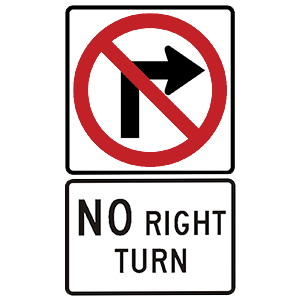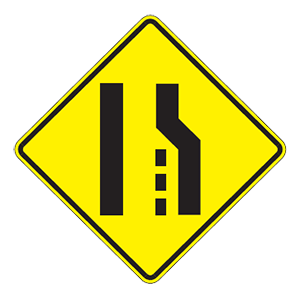2025 Iowa Permit Test 22
The following questions are from real DMV written tests. These are some of the actual permit questions you will face in Iowa. Each permit practice test question has three answer choices. Select one answer for each question and select "grade this section." You can find this button at the bottom of the drivers license quiz. For a complete list of questions and answers for Iowa please visit https://cheat-sheets.dmv-written-test.com/en/iowa/car.
Number of Tests
Number of Question
Passing Score
25. This sign means:

Explanation
Where this sign is posted, it is prohibited to make a right turn. It would be unsafe and unlawful to make a right turn at an intersection with this sign.
26. When you park uphill on a street with a curb:
Explanation
When parking on an incline where there is a curb, you should turn your wheels sharply to the left, away from the curb. This way, if your brakes fail, your vehicle will not roll into traffic.
27. If you have a sudden tire blowout:
Explanation
If a tire suddenly goes flat while you are driving, hold the steering wheel tightly and keep the vehicle moving straight. Slow down gradually by taking your foot off the gas pedal and using the brakes lightly.
28. Regulatory signs:
Explanation
Regulatory signs are often rectangular and white with black markings and are used to indicate what things a driver must or must not do in a designated area. They may display speed limits, prohibit passing or turning, or clarify any other driving regulation.
29. You are driving along a street and hear a siren. You cannot immediately see the emergency vehicle. You should:
Explanation
If you hear a siren or an air horn close by but do not know exactly where the emergency vehicle is, safely pull over to the right side of the road and stop until you are sure it is not headed toward you.
30. This sign means:

Explanation
